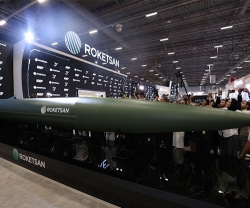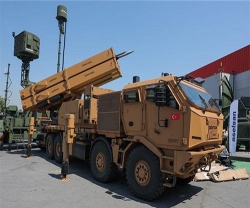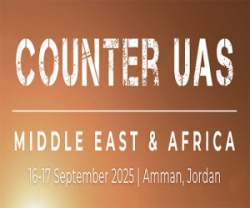Russia is developing radio-electronic weapons, which use a powerful UHF impulse capable of destroying all electronic equipment miles away, a senior advisor to the Deputy Head of Radio-Electronic Technologies Concern (KRET) told Sputnik.
Earlier, media reports said that Russia’s defense industry had come up with the Alabuga, a new electro-magnetic missile, which uses a powerful UHF emitter to disable all enemy electronics within a radius of 3.5 kilometers (2.3 miles), turning it into “a heap of scrap metal.”
In an interview with Sputnik, Vladimir Mikheev, a senior adviser to KRET’s Chief, said that the Alabuga stands for a whole series of scientific research in the development of the radio-electronic weapons of the future.
“The effect of such weapons may vary from ordinary interference that temporarily knocks out the enemy’s weapons systems, all the way to a complete radio-electronic destruction of electronic elements, motherboards, microchips and systems,” Mikheev explained.
He added that all the research results were classified and the subject of UHF weapons was assigned a top secret classification.
“All I can say is that the obtained know-how is now being used in the development of electromagnetic artillery shells, bombs and missiles, which carry a magnetic explosion generator,” Vladimir Mikheev said.
The pulsed radiation generated by the UHF emitter developed as part of the Alabuga project is similar to that of a nuclear explosion, but without the radioactive component.
The Listva, which also uses a powerful UHF impulse, is a remotely operated mine clearance vehicle capable of detecting and blowing up mines up to 100 meters away, is one such weapon.
An armored vehicle equipped with a UHF emitter moves in front of a mobile missile system. It detects radio-controlled landmines planted along and away from the road using ground-penetrating radar and then uses ultra-high-frequency rays to neutralize them. This is a novel technique, which had never been used before.
During a drill last week, some 20 real cellphone-controlled explosive devices were planted along the route of a column of Yars mobile ballistic missile systems. A single Listva vehicle spotted all of them and blew them up long before the missiles reached the area.
In the next two years Russia’s Strategic Missile Forces will receive over 150 Listva robotic mine clearing vehicles.
The unique radio-electronic weapons based on new physical principles, which were successfully tested in Russia last fall use mobile electromagnetic emitters to disable missile warheads and onboard aircraft electronics many miles away.
The electromagnetic bombs developed by Russia can be more effective than nuclear weapons because they are able to neutralize entire armies with just one short electromagnetic impulse.
Unlike already exiting electronic jammers, they can completely take out or seriously damage even off-line weapons like tanks, grounded planes and missiles in silos.
The US, Israel and China are equally busy developing their own types of electromagnetic weapons. During Operation Desert Storm in Iraq in 1991, the Americans used a relatively primitive electronic bomb by fitting the warheads of their Tomahawk cruise missiles with carbon fiber.
As a result, the missiles short-circuited the electrical lines of Iraqi power stations and power lines severely degrading the country’s vital infrastructure and air defenses.
The Pentagon used more advanced electromagnetic weapons during NATO’s 1999 aggression against Yugoslavia. In the first two week alone, the US Air Force dropped over 400 super-heavy JDAM gliding bombs packed with graphite and metallic fibers and particles knocking out the country’s entire air defense control system.






















